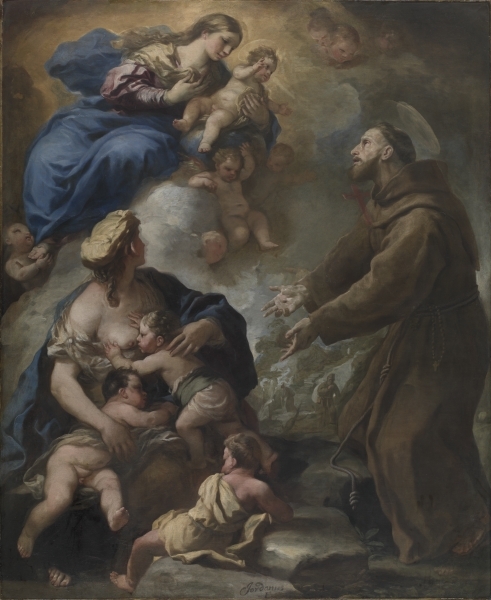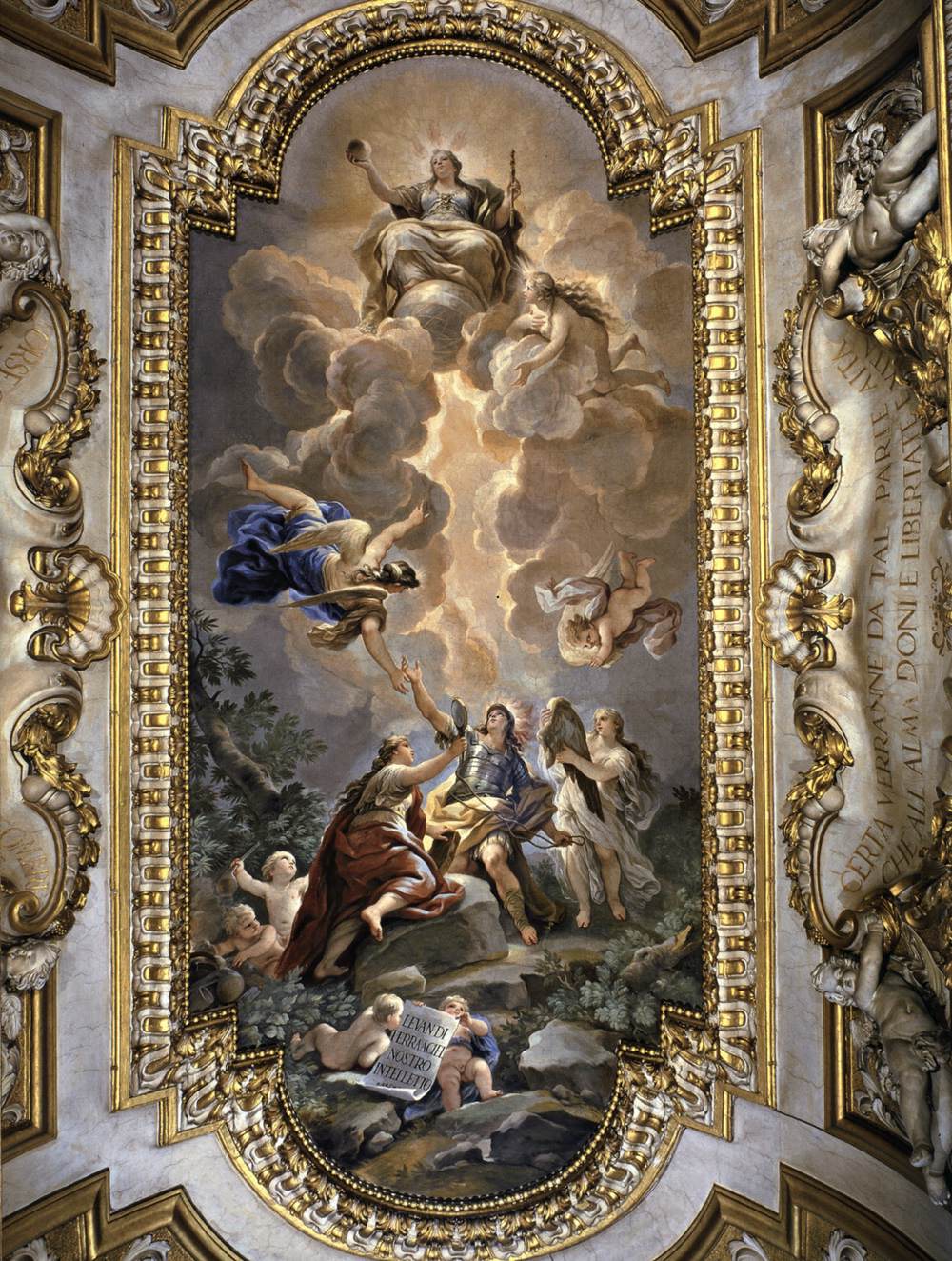By Anne Leader
Luca Giordano died 3 January 1705 in his hometown of Naples. A prolific artist known for speedy execution, Giordano was widely sought after and created numerous altarpieces, mythological paintings, and fresco cycles in both religious and domestic settings. As the prior of El Escorial famously wrote to the Spanish king:
Today your Giordano has painted ten, eleven, twelve figures three times life size, plus the Powers, Dominions, Angels, Seraphim and Cherubim that go with them and all the clouds that support them. The two theologians he has at his side to instruct him in the mysteries are less ready with their answers than he is with his questions, for their tongues are too slow for the speed of his brush.
An international superstar, Giordano worked in Florence, Venice, and Madrid as well as his native Naples, then part of the Spanish crown. Today is his recognized as one of the greatest artists of the Italian Baroque.
Trained by his father Antonio (c. 1597-1683), Luca’s first works show the influence of the dark, tenebristic manner of Caravaggio and fellow Neapolitans Jusepe de Ribera and Mattia Preti, as seen in one of his earliest works that shows Giordano himself in the guise of St. Luke painting a portrait of the Virgin Mary and baby Jesus.
Over the course of his career, Giordano moved to a brighter, lighter palette, largely inspired by his admiration of Renaissance Venetian painters and Pietro da Cortona, one of the leading painters active in mid-century Rome. For example, his grand ceiling frescoes painted for Marchese Francesco Riccardi in Florence are reminiscent of the great programs found in Rome. Giordano went to Spain in 1692 at the behest of King Charles II. He served the court as official painter until 1702 when he returned home. He remained in Naples until his death in 1705. At his death, he left a fresco in the church of S. Brigida unfinished. Though he did not paint much of it himself, it anticipates the great painters of the Rococo, including Francisco Goya.
Reference: Daniela Campanelli. “Giordano, Luca.” Grove Art Online. Oxford Art Online. Oxford University Press.
The Annunciation, 1672. New York: The Metropolitan Museum of Art, Gift of Mr. and Mrs. Charles Wrightsman, 1973
The Virgin and Child Appearing to Saint Francis of Assisi, 1680s. The Cleveland Museum of Art, Mr. and Mrs. William H. Marlatt Fund
The Martyrdom of St. Januarius, ca. 1690. London: The National Gallery
St. Luke Painting the Virgin and Child, ca. 1650-54. Ponce Museum of Art
View of the Galleria Riccardiana, 1683-85, fresco. Palazzo Medici Riccardi, Florence
Apotheosis of Wisdom, 1685, fresco. Palazzo Medici Riccardi, Florence






